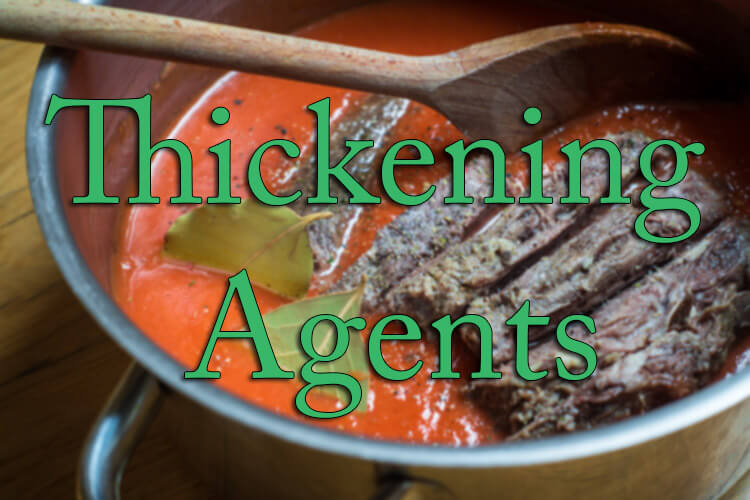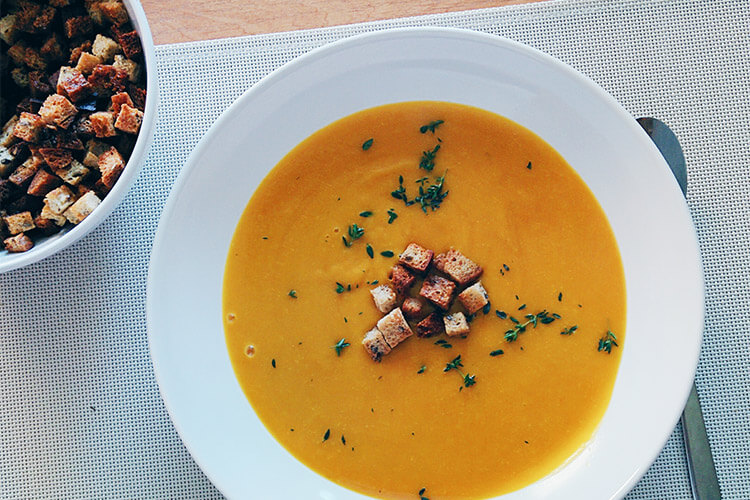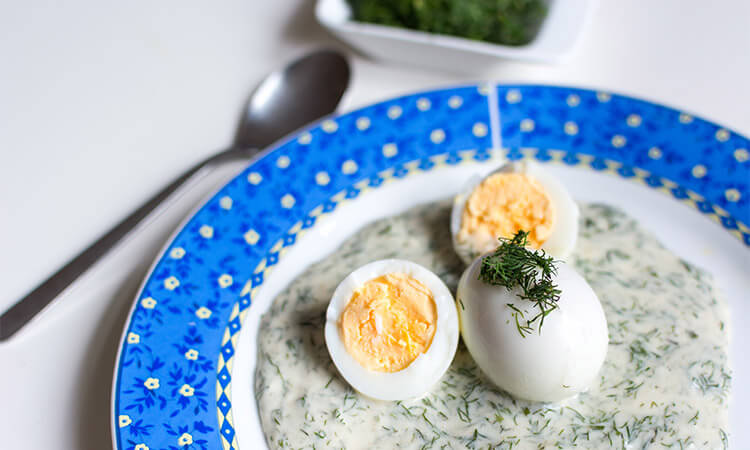9 Best Thickening Agents That Make Your Soup & Sauce a Masterpiece

A thickening agent is a gel or powder which can be added to sauces, soups, gravies, or puddings to increase their viscosity without altering their properties. Most thickening agents are made of proteins such as gelatin or eggs, or polysaccharides i.e. starch, pectin, or vegetable gums
Thickeners are always added in the final stages of preparing food. The choice of a thickening agent is determined by the kind of recipe in play because of the difference in taste, clarity, and reaction to the physical and chemical situations.
Toggle for Table of Contents
Thickening Method

Gelatinization
Gelatinization is the process which is used for producing thickening agents made of starch. Here, cold water is added to the starch, and the starch granules absorb most of the liquid, and after being added to the food ingredients under heat, they absorb more liquid.
The whole process leads to amalgamation of the molecules which cause the sauce to stiffen. Starch thickeners are usually from arrow roots, wheat, corn, potatoes, or tapioca, and they are used in gravies and sauces.
The Most Common Thickening Agents
Whitewash
Whitewash is a mixture of wheat flour and cold water. The mixture is whisked until it is smooth, then it is added to a bubbling liquid, and left to cook until the raw taste of flour is removed. It turns opaque when it is added to a sauce and may thin out if cooked for long.
Whitewash leaves a velvety feeling in the mouth, although it lacks flavor or a subtle texture. Since wheat flour is made up of proteins and starch, it is suitable for stews, sauces, gravies, fruit fillings, and gumbos.
Roux
Roux is a cooked mixture of flour and fat like margarine, animal fats, clarified butter, vegetable oil, and shortening, or rendered meat drippings. Clarified butter is the most preferred type of fat due to its flavor.
Clarified butter makes the roux easy to work as it lacks moisture and does not gelatinize the starch and margarine is the most common choice since it’s cheaper compared to other fats.
Animal fats, on the other hand, are chosen according to their flavor, for example, chicken fat can be used for chicken veloute’ while beef drippings can be utilized for beef gravy.
Lastly, although the vegetable oil and shortening is used in making roux, it does add flavor to the sauce or soups.
The stages of a roux
- White Roux. A white roux maintains its original color because it is cooked for a little while just enough to get rid of the starchy taste.
- Blonde Roux. A blonde roux is slightly caramelized to gain a darker blonde color.
- Brown Roux. Brown roux is cooked until it is almost burnt, caramelized highly, and has a nutty flavor. For more information on how to make a roux, you can refer here.
Beurre manié (burr mahnyay)
Beurre manié is a mixture of equal measures of raw butter and flour whisked together to produce a smooth and a well-blended paste.
The Beurre manié is then added to a bubbling sauce and stirred until it is smooth, and then it is simmered for a few minutes to allow the flour to cook. The raw butter gives the sauce a unique taste and adds sheen after melting.
Liaison (lee-ay-zohn)
Liaison is a mixture of beaten egg yolk and cream that can be used in sauces and soups to enhance its flavor, texture, and thicken them. However, the liaison can only stay no more than one minute in cooking and must hold under 180 Fahrenheit (80-degree Celsius) to prevent the eggs from curdling.
Quick steps to add the liaison to the soup or sauce:
- Remove the sauce from the heat.
- Season the sauce properly.
- Mix the beaten egg yolks and the cream together.
- Add small amounts of sauce to the liaison and whip gradually.
- Always make sure that the sauce and the liaison are balanced.
- Hold the liaison to serve.
Sharing is Caring

Like what you read so far? How about help us to spread this AWESOME post to your friend and family? Your shout-out will help to motivate us to create more great posts for you and everyone else. Thanks for your support!
Check out this post for '9 Best Thickening Agents That Make Your Soup, Sauce, Gravy and Puddings a Masterpiece'
Cornstarch
Cornstarch is mixed with cold water or other cold fluids until it is smooth, and later stir in and simmered until the liquid loses the starchy taste and becomes clear.
However, prolonged boiling may break down the starch and thin out the liquid. Cornstarch is appropriate for sweet sauces as an accompaniment of some types of meats, desserts, and dessert sauces due to its glossy texture.
Arrowroot or tapioca
They are expensive to acquire since they are found in rhizomes of South American plants. Hence they are not frequently used. It gives a clearer and high-quality sauce than cornstarch since it does not contain any gluten.
Arrowroot is more appropriate to use for acidic foods since it does not lose its thickening potency. Also, it is the most suitable choice in cases where the food is to be frozen. Tapioca is an appropriate thickening agent for preparing foods like the strawberry rhubarb pie.
Slurry
When creating a slurry, corn starch is added to a little cold water and then stirred into a simmering sauce. The mixture is then simmered until it loses its starchy flavor.
The slurry is the easiest thickening method since it is created instantly to form a glossy appearance. Learn more about preparing interesting food with using slurry here.
Potato starch
This starch is coming from potatoes which are added into cold water whisked together and then stirred into simmering liquid. It forms thick and translucent gravies, stews, or soups because it does not contain gluten.
Additionally, the potato starch thickener has numerous health benefits such as increasing fiber in the body, lowering the plasma cholesterol, and a source of energy.
Vegetable Gums
Vegetable gums are an example of thickening agents obtained from land or sea sources, for instance, some seaweed contains carrageenan and alginates while locust bean gum, guar, and pectin are derived from plants.
The polysaccharides in vegetable gums enhance its viscosity properties. The main vegetable gums include:
- Agar-agar which is used for gelling dairy products like yogurt.
- Cellulose gum is used in thickening beverages, baked food products, and ice-creams to avoid stalling.
- Xanthan gum is used in thickening sauces and salad dressing.
- Guar gum is used as a thickening agent in sauces or stews.
Choice of Thickening Agents Matters

Thickening agents can be used to thicken the sauces and stews as well as add flavor and a glistening sheen. The right selection of a thickening agent can make a dish either delicious while a wrong choice can ruin the food and taste.
So before you start to cook with thickening agents, make sure you understand each of the agent's characteristics and use it correctly so you can have the outcome you wanted.
By the way, if you regularly cook with essential oil, we have a post covering some excellent information about cooking with essential oil that you might want to check out.
And if you love to drink tea like me, the 10 benefits of drinking nutmeg tea post might be of interest to you.
Or, if using herb is part of your cooking routine, then the 15 ideas to cook with thyme is a great post you can spend your afternoon reading. Happy cooking!
Related Popular Posts



